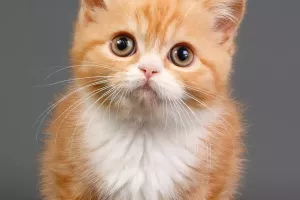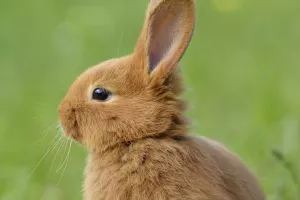Humans and animals have pupils in their eyes, which are the channels through which light from outside enters the eye. When light from an external object enters our pupils, we can only see the object. Pupil size changes in all animals, but we can see that the cat's pupil changes are the most prominent.
Careful people who have raised cats may find such an interesting phenomenon: morning, noon with strong sunlight, and dark night, in these three different time periods, the shape of the cat's pupil is different. When the light is not too bright in the morning or at dusk, the cat's pupil is jujube-shaped; when the sun is strong at noon, the cat's pupil is like a line; at night, the cat's pupil becomes round and bright.
As far as the cat's eye structure is concerned, the entire cat's eyes are large and round. A cat has a layer of choroid on the outside of the retina, which is the orange layer of cells that reflects light that passes through the retina. With just a little light, cats can quickly focus through this retina. So in darker places, the cat's pupils become larger and rounder to capture light. The layer below the choroid is the film, which makes the cat's eyes glow at night, which is why you see the cat's round and glowing eyes at night.
However, cats have only two types of cones, green and blue. Therefore, cats can only distinguish limited colors, such as gray and green, blue, yellow, etc. Of course, the sacrifice of the cat's color sense is in exchange for its super powerful night vision. In the dark, the cat's cones don't work anymore. At this time, the rod cells in the retina come into play. These cells cannot perceive color, so what the cat sees in the dark is black and white.
The pupil dilation of cats at night is related to the nature of cats. In nature, cats are nocturnal animals, and the eye structure of cats is designed for them to hunt at night. Of course, in the case of sufficient light, the cat's eyes will automatically shrink, or even shrink into a line.
Simply put, a cat's pupils contract with the intensity of light. The light during the day is so strong that it can damage the eyes, so the pupils shrink. At night, when cats go out for food, in order to see clearly at night, they dilate their pupils to let more light into their eyes.
But sometimes the surrounding environment doesn't change much, and the cat's pupil size also changes. This reflects the changes in the cat's mood. For example, when cats are very happy when they see food, or when they are excited to play, or when they are afraid or fearful, the cat's pupils will secrete adrenaline, which will cause the pupils to dilate. If the cat is in a confident attacking stance, the pupils will shrink into a thin line when they stare at each other with sharp eyes. At this time, if the opponent admits defeat with an action, the next battle can be avoided for the time being.


